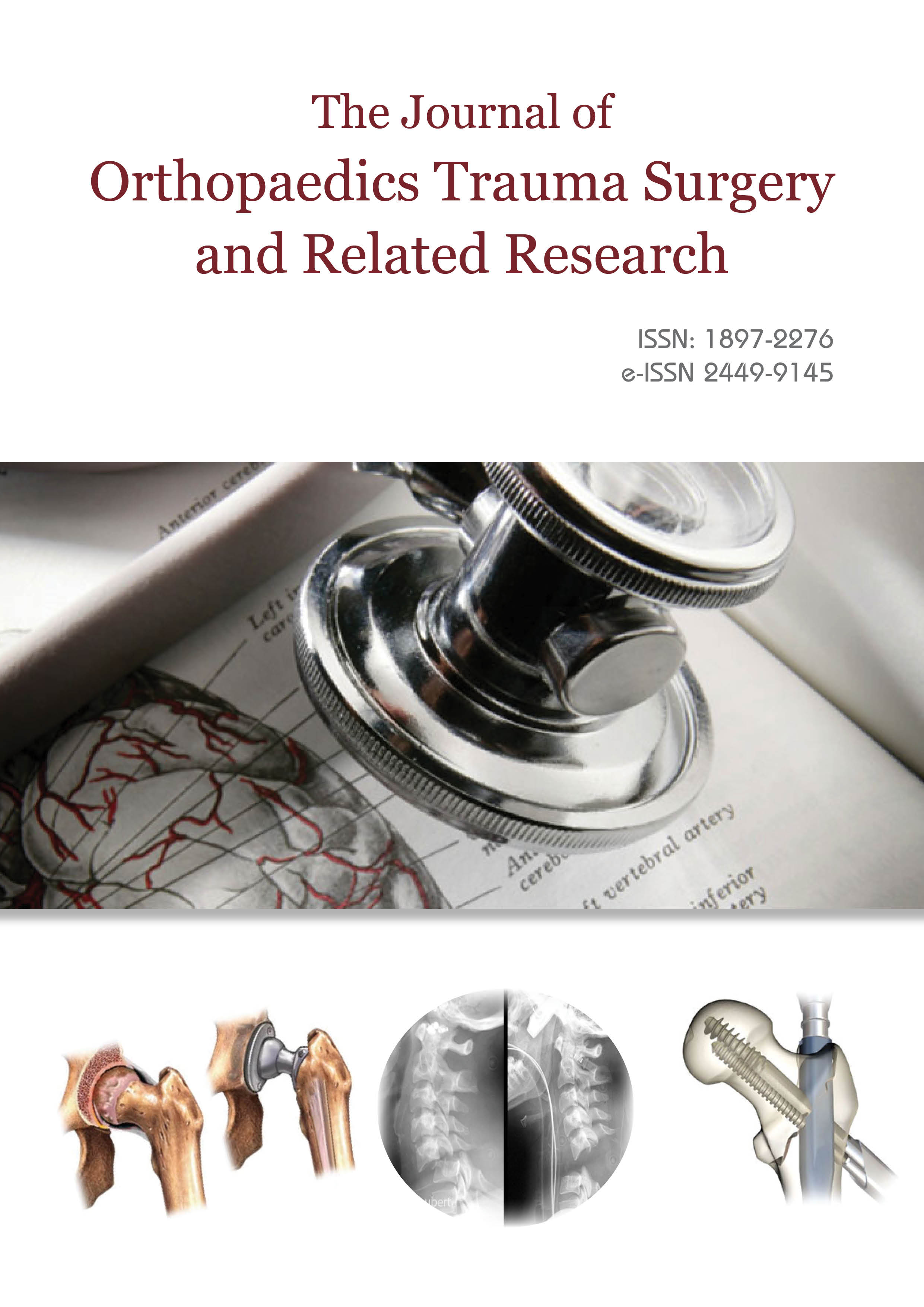Journal of Orthopaedics Trauma Surgery and Related Research

An Official Journal of Polish Society of Orthopaedics and Traumatology
ISSN:1897-2276
e-ISSN: 2449-9145

An Official Journal of Polish Society of Orthopaedics and Traumatology
ISSN:1897-2276
e-ISSN: 2449-9145
Aim: Patient satisfaction after total knee patient satisfaction after Total Knee Arthroplasty (TKA) is a matter of concern. There are multitude of patient, surgery and implant factors associated to it...
Aim: To assess the radiological and functional outcomes of minimally invasive plate osteosynthesis in treating diaphyseal humeral fractures using a plate with only two screws (relative stability) on either side of the...
Background: Age-related osteoporosis is a major public health issue. Bone fractures are more likely to occur as a result of the health effects of this disease. A person's Bone Mineral Density (BMD) may change beca...
Muscle spasms and associated pain are common in conditions ranging from direct muscle trauma to neurological disorders. This article examines the mechanisms and clinical management of muscle spasms, focusing on the ap...
The trapezius muscle plays a critical role in the movement and stabilization of the shoulder and neck. The anatomical structure of trapezius fibers, from their origins to insertions, and their functional roles reveal ...
Introduction: In instrumented thoracolumbar fusion, optimal interplay of spinal alignment, screw position, and rod bending is critical to avoid mechanical overload. Augmented Reality (AR) can help to better control in...
Objectives: This study aims to study the outcome of plate augmentation with or without bone grafting in long bone non-unions with IMN in situ. Design: Prospective clinical study with 9 months of follow-up....
Introduction: Combined injuries are more common than previously believed, with an incidence of 15.7% of all pelvic trauma victims. These types of injuries are different from isolated acetabular or pelvic injuries rega...
Elbow fractures are injuries that occur due to trauma, such as falls, sports-related impacts, or direct blows. These fractures typically involve one or more of the bones forming the elbow joint: the olecranon, radial ...
Compartment syndrome is a serious medical condition characterized by increased pressure within a confined muscle compartment, which can compromise circulation and tissue function. This article explores the two primary...
Hand and wrist disorders are common during pregnancy. Most of these problems develop during the third trimester when hormonal changes, fluid retention, and weight gain are maximum. This review study aimed to discuss p...
Background: Pelvic fractures are relatively frequent injuries that can range in severity from minor, isolated bone fragments to complex disruptions of the pelvic ring. The aim of this work was to study the prognosis o...
Background: Tibial shaft fractures are a common injury, with various fixation techniques available. This study aims to compare two minimally invasive methods of fracture fixation MIPO (Minimally Invas...
Select your language of interest to view the total content in your interested language
 Journal of Orthopaedics Trauma Surgery and Related Research a publication of Polish Society, is a peer-reviewed online journal with quaterly print on demand compilation of issues published.
Journal of Orthopaedics Trauma Surgery and Related Research a publication of Polish Society, is a peer-reviewed online journal with quaterly print on demand compilation of issues published.